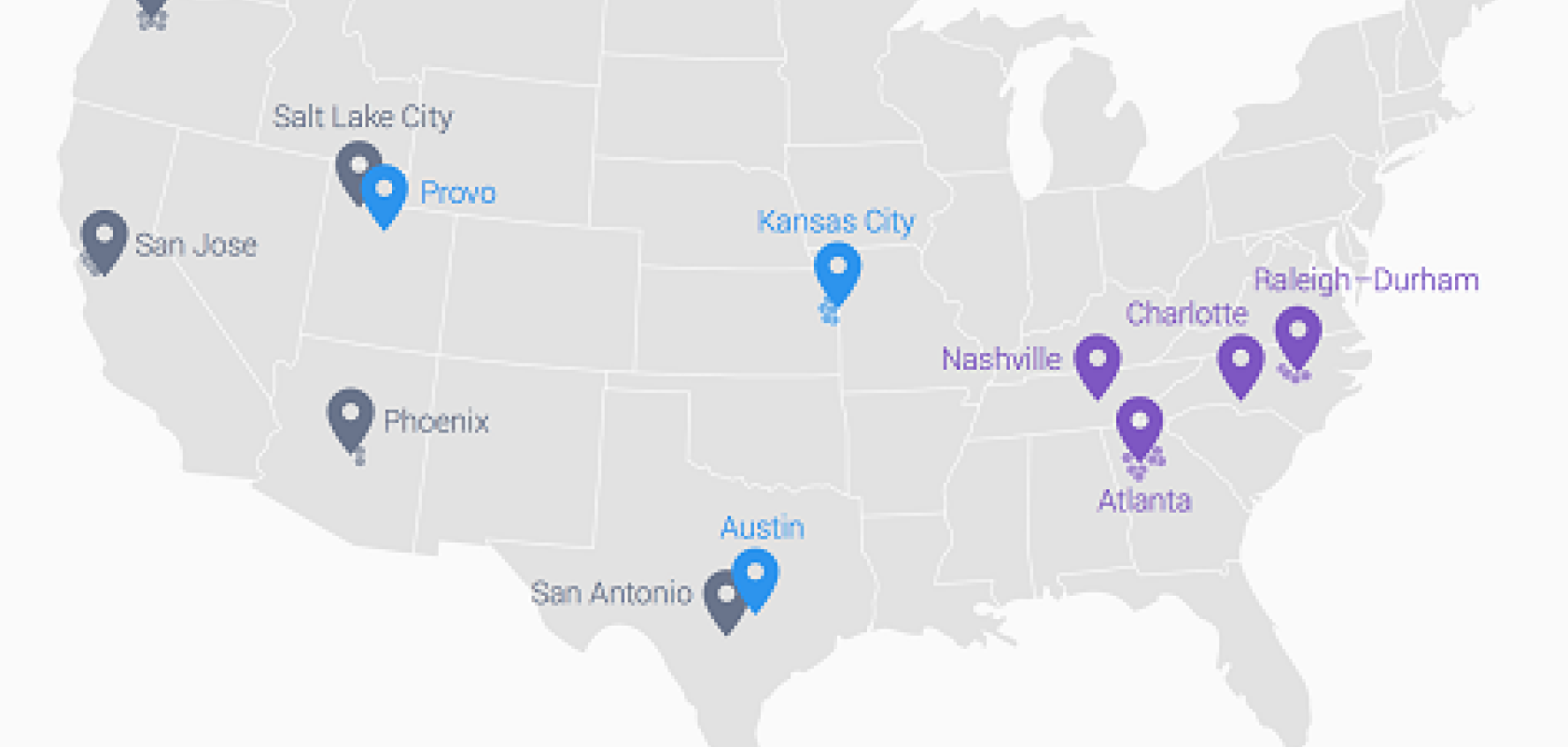Five years since Google said it would build a gigabit-speed network in one US city as an experiment, the search engine giant is ready to roll out fibre-to-the-home (FTTH) networks on a much grander scale.
Google has announced that Google Fiber is coming to 18 cities across four new metro areas: Atlanta, Charlotte, Nashville, and Raleigh-Durham.
The company also says it will continue to explore bringing FTTH to five further metro areas, namely Phoenix, Portland, Salt Lake City, San Antonio and San Jose. Updates are expected later this year.
Google Fiber is already live in Kansas City, Austin and Provo.
The announcement suggests that Google wants to reach all 34 cities that it identified as possible targets for expansion about a year ago.
The gigabit race - which Google had a hand in starting - is gathering speed across the US (and also across Europe - see The rise of gigabit broadband in Europe.)
‘Today, we aren't the only ones talking about gigabit broadband. From the White House to main street, a chorus of new voices is standing up for speed,’ wrote Dennis Kish, vice president, Google Fiber in a blog post announcing the next wave of ‘Fiber Cities’.
Just last week during the State of the Union, the US president called for faster broadband so that innovators and entrepreneurs can ‘go as far as their dreams will take them’. He also outlined a range of measures to support municipal broadband efforts.
Recent research from the Fiber to the Home Council North America shows that gigabit networks contribute billions of dollars to the economy, with gigabit-enabled communities enjoying per capita GDP that is 1.1% higher than communities with little or no access to gigabit services.
‘Communities across America are demanding more speed for their own homes and businesses, and we’re going to keep doing our part to help,’ Kish said.
Those communities have to help Google to help themselves. Over the past year Google has been working with municipal leaders on a checklist of requirements that will ease the construction process – including information on existing infrastructure, how to access that infrastructure, and construction permits and processes.
‘Now the hard work begins,’ said Kish. The next step is to work with cities to create a detailed map of where we can put our thousands of miles of fibre, using existing infrastructure such as utility poles and underground conduit.’
Google did not give a detailed timetable for each city, but said it expects to start construction ‘in a few months’.


